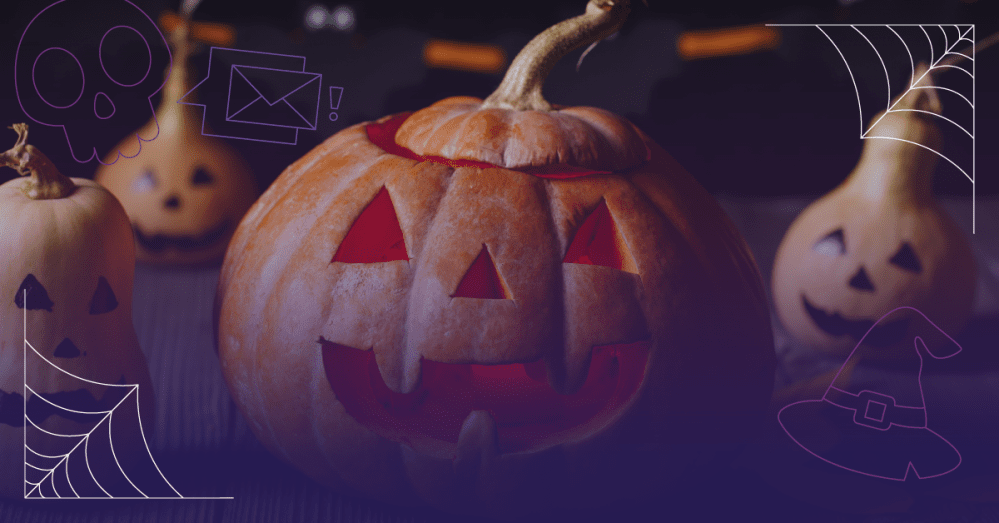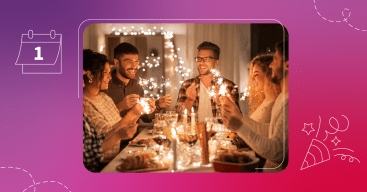Just like a haunted house might draw in thrill-seekers with creaky floors and flickering lights, a mysterious brand experience can lure in curious consumers who are eager to uncover what’s behind the next corner.
In this post, we’ll dive into the psychology behind what makes people click, buy, and come back for more … especially when emotion, suspense, and curiosity are being used as marketing tactics. From the thrill of the unknown to the power of urgency, we’ll explore how emotional triggers influence consumer behavior and how your business can use them both ethically and effectively.
So, are you ready to turn your local business marketing into something spooky smart? Then read on!
[Related: 25 Fall Marketing Ideas to Spice Up the Season]
The role of emotion in decision-making
When it comes to consumer behavior, emotion isn’t just one part of the equation, it’s often what leads the decision. Before logic kicks in, feelings like excitement, curiosity, or even fear can shape how people respond to your brand (or product or service). In fact, 69% of Americans admit that emotions have influenced their spending.
Why does emotion win over logic?
Research shows that emotional processing happens faster than rational thought. That means consumers often feel before they think, and in turn, those feelings guide their decisions. Whether it’s the suspense of a countdown or the fuzzy feeling of a heartfelt ad, emotional cues can drive action more effectively than just facts alone.
Emotional cues that trigger action
These are the types of emotional cues that tend to resonate with people:
- Visuals that evoke mood (think eerie lighting or cozy fall colors)
- Tone and music that set the emotional stage
- Storytelling that builds suspense or connection
- Seasonal emotions like fear (hello, Halloween), nostalgia (holiday campaigns), or excitement (new year, new you)
[Related: Podcast: 3 Marketing Mindsets to Success]
Urgency vs fear: Motivating without manipulating
Because of the nature of the Halloween season, you might be tempted to use a few fear-based emotional tactics in your marketing. But there’s a fine line between motivating your audience and making them feel pressured. And if you want to practice emotionally smart marketing, that line matters. Urgency can inspire your customers to take action; fear, on the other hand, can damage trust if it’s overused or misused.
What’s the difference between motivating and manipulating?
Motivation taps into positive emotions like excitement, anticipation, and even a little FOMO (fear of missing out)—which contributes to 20% of purchases, by the way. But manipulation relies on anxiety or panic to push people into decisions they might later regret. Despite it being the spooky season, the goal isn’t to scare your audience into buying, it’s to help them feel confident about acting quickly.
Ethical scarcity tactics
Take scarcity and time-sensitive messaging, for example. A 2018 study showed when unimportant tasks are characterized by spurious urgency (e.g. an illusion of expiration), people are more likely to perform them over more important tasks. As you can see, this type of messaging can be powerful … when you use them with transparency and respect.
Here’s how to get it right:
- Time-sensitive offers that clearly communicate deadlines without pressure
- Limited inventory alerts that inform, not alarm
- Transparent messaging that builds trust (“Only 3 left—and we’ll restock soon!”)
Best practices for empowering urgency
To ensure your customers don’t lose trust in you, be careful to use urgency to empower, not pressure. Avoid fear-based messaging that creates anxiety or distrust, and frame any offers as opportunities, not ultimatums.
For example, messaging like, “Get yours before they’re gone!” feels exciting and inviting. Whereas something like, “Act now or lose everything!” is a little too spooky—and not in a good way.
When you choose to use urgency ethically, it becomes a tool for engagement instead of manipulation. And that’s exactly the kind of marketing that keeps customers coming back again and again.
[Related: 3 Reasons Why You Should Use Online Content to Attract Customers to Your Local Business]
Mystery and curiosity as engagement tools
Speaking of engagement tools, let’s talk about a couple of other spooky emotions that really kill it in Halloween marketing: mystery and curiosity.
Sometimes, what you don’t say is just as powerful as what you do. In marketing, mystery isn’t about being vague or deceptive … it’s about being intriguing. A well-placed teaser or a slow reveal can keep your audience coming back for more, which is really what engagement is all about.
Why is the unknown so compelling?
Humans are naturally curious. So much so that there is even a whole psychological principle about it—the “curiosity gap.” The curiosity gap is the space between what we know and what we want to know. It’s what keeps us watching movie trailers, why headlines are so effective, and why we occasionally fall for clickbait. When your content hints at something exciting just around the corner, it invites your audience to take a peek around that corner.
Here are a few ways to use mystery to your advantage:
- Teaser campaigns that build anticipation over time
- Cliffhangers in storytelling that leave your audience wanting more
- Interactive storytelling that lets users uncover the message piece by piece
- “Coming soon” content that sparks interest without giving everything away
A real-world example of mystery marketing
One of the best spooky-season examples of mystery marketing in action is the campaign for the movie, “The Blair Witch Project.”
By using a combination of vague promotional materials and a website hinting that the events of the film might be based on a true story to go along with the faux documentary or “found footage” filming style of the movie, filmmakers blurred the lines of fiction and reality for moviegoers. It made people ask themselves if the “footage” was actually real and what the characters actually found in the woods. And that curiosity led to the film’s viral success.
[Related: 3 Ways to Stay Engaged With Your Customers Without Spending More Time]
Bringing it all together: Spooky smart strategy
When you can blend together emotion, urgency, and mystery in your marketing (for both spooky season and beyond!), you can transform your campaigns from something people just scroll right past to something unforgettable.
It’s all about the right balance. Your campaigns should feel exciting, not manipulative. It’s suspense that builds anticipation, not confusion or fear.
Use this quick checklist to make sure your emotional marketing is ethical and on the right track:
- Is this message emotionally resonant?
- Does it respect the consumer’s intelligence?
- Does it build trust while sparking curiosity?
If you can check all three, you’re successfully connecting with your customers instead of just marketing to them.
[Related: The Complete Guide to Where You Should Advertise Online [Free Guide]]
Hibu’s spell for emotionally smart marketing
Halloween isn’t just about costumes and candy. It’s the season where you can really tap into your audience’s emotions.
Whether it’s suspense, urgency, or curiosity, these psychological triggers can be powerful tools … not to scare, but to spark action. Which helps local businesses like yours connect with their audiences in meaningful, memorable ways.
Ready to brew up some spooky-smart content that drives real results? With Hibu One—our AI-enabled, all-in-one digital marketing platform— we can conjure up something together.
Complete our short Get Started form or call us today at 877-237-6120 for a free consultation.



